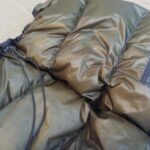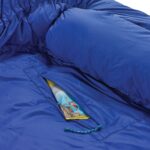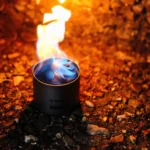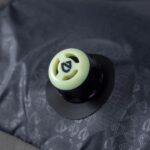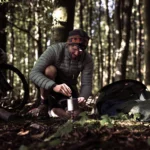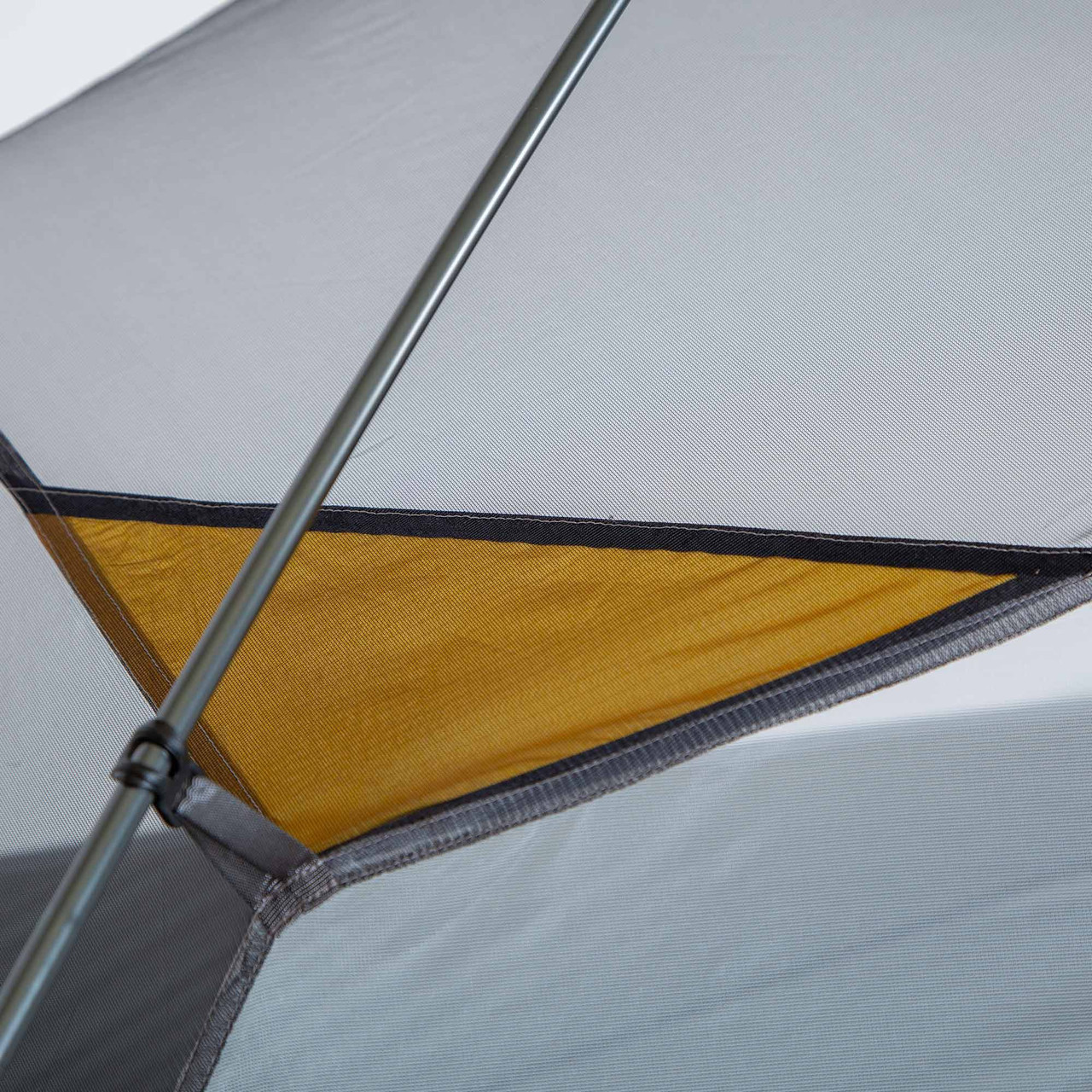
The Therm-a-Rest Polar Ranger sleeping bag is designed for serious cold. Rated to -30°C (-20°F), it’s built for expeditions, high-altitude camps, and deep-winter bivvies where warmth is not optional. Developed in collaboration with polar explorer Eric Larsen, this bag is packed with features that go beyond standard cold-weather designs. It’s not a general-purpose sleeping bag—it’s a specialised tool for survival and comfort in the harshest conditions.
This review explores the Polar Ranger’s materials, design, thermal performance, usability, and long-term durability. It’s written for users who need clarity, not fluff, and who want to know whether this bag delivers on its promise of expedition-grade warmth.
Materials and Construction
The Therm-a-Rest Polar Ranger sleeping bag uses 800-fill Nikwax Hydrophobic Down, which is treated to resist moisture and maintain loft even in damp environments. This is critical in sub-zero conditions where condensation and frost can quickly degrade insulation. The down is responsibly sourced and certified to meet global standards for animal welfare.
The outer shell is made from 20D polyester with a durable water repellent (DWR) finish. It’s lightweight but tough enough to handle abrasion from ice, snow, and rough terrain. The inner lining is soft and breathable, creating a comfortable sleep environment without trapping moisture.
The bag’s shape is a modified mummy cut. It offers extra room in the torso and footbox, allowing users to move freely and wear insulated layers inside. The footbox is reinforced with synthetic insulation and waterproof fabric, making it suitable for storing damp gear or boot liners without compromising warmth.

Unique Design Features
What sets the Polar Ranger apart is its expedition-specific design. Therm-a-Rest has included several features that solve real problems encountered in extreme cold:
- Snorkel Hood: This sculpted hood includes a snorkel-style baffle that directs moist exhaled air away from the bag. It helps reduce frost buildup around the face and keeps the insulation dry.
- Side Arm Ports: Zippered openings on both sides allow users to access gear, cook, or adjust equipment without leaving the bag. This is especially useful during storms or in exposed camps.
- Overlapping Draft Tubes: These run along the full-length zipper and across the chest, sealing in warmth and preventing cold spots.
- SynergyLink Connectors: Elastic straps on the underside attach the bag to a sleeping pad. This prevents slippage and eliminates cold air gaps beneath the sleeper.
These features aren’t gimmicks—they’re functional enhancements that improve safety and comfort in demanding environments.
Thermal Performance
The Polar Ranger is rated to -30°C, and it performs as advertised. In field conditions, it maintains warmth even in high winds and deep frost. The hydrophobic down retains loft overnight, and the snorkel hood genuinely reduces moisture buildup around the face.
The side ports allow limited movement without full exposure, which is useful for reaching water bottles, adjusting layers, or handling gear. The footbox stays warm and dry, even when used with damp socks or boot liners.
There’s enough room inside the bag to wear down jackets or insulated trousers. This flexibility adds a margin of safety in unpredictable conditions and allows users to adapt their sleep system to changing weather.

Therm-a-Rest Polar Ranger sleeping bag Comfort and Fit
Despite its expedition-grade build, the Polar Ranger is comfortable. The inner fabric is soft and doesn’t feel clammy, even after long nights. The roomy cut allows natural movement, which is rare in cold-weather bags.
Side sleepers will appreciate the extra space in the torso, while back sleepers benefit from the sculpted hood and neck baffle. The zippers operate smoothly, even with gloves, and the draft tubes prevent cold spots along the seams.
The bag feels secure without being restrictive. It’s easy to adjust the hood and collar for a snug fit, and the side ports don’t compromise insulation when closed.
Weight and Packability
Weighing approximately 1.5 kg (3.3 lbs), the Polar Ranger is not ultralight, but it’s competitive for its warmth rating. It packs down to a manageable size in its compression sack and fits into 65–75 litre backpacks with room to spare.
For users who prioritise warmth-to-weight ratio, the 800-fill down and efficient design make it a strong contender. It’s not suitable for summer use, and it’s not meant to be. This is a specialist bag for serious cold, and its weight reflects that purpose.

Durability and Long-Term Use
Therm-a-Rest has built the Polar Ranger to last. The shell fabric resists abrasion, and the down retains loft after repeated compressions. The snorkel hood and footbox show minimal wear even after extended use in snow and ice.
Zippers are robust and snag-resistant, and the SynergyLink straps hold up well to repeated attachment. The bag can be washed and re-lofted with proper care, and Therm-a-Rest offers solid customer support for repairs or replacements.
The reinforced footbox is a standout feature. It handles moisture and abrasion better than standard down-filled footboxes, making it ideal for users who store gear inside their sleeping bag.
Use Cases and Versatility
The Polar Ranger excels in scenarios where reliability and warmth are critical. It’s ideal for:
- High-altitude mountaineering
- Arctic and polar expeditions
- Winter camping in deep snow
- Emergency bivvies in sub-zero conditions
It’s less suited to mild climates or casual use. The snorkel hood and side ports are unnecessary in spring or autumn, and the weight may be excessive for fastpacking. But for users who face real cold, it’s a specialised tool that performs reliably.

Pros and Cons
Pros
- Rated to -30°C with 800-fill hydrophobic down
- Snorkel hood reduces frost buildup
- Side arm ports allow gear access without exposure
- SynergyLink pad connectors prevent heat loss
- Reinforced footbox handles moisture and abrasion
- Roomy cut allows layering and movement
- Durable construction with expedition-grade materials
Cons
- Heavier than three-season bags
- Expensive compared to standard down bags
- Overkill for mild conditions
- Side ports add complexity to design
- Not ideal for ultralight setups
Final Verdict
The Therm-a-Rest Polar Ranger is a purpose-built sleeping bag for users who face real cold. It’s not trying to be versatile—it’s trying to keep you alive and comfortable in conditions that most gear can’t handle. From the snorkel hood to the reinforced footbox, every feature is engineered for performance in sub-zero environments.
For mountaineers, polar travellers, and winter campers who demand warmth, reliability, and thoughtful design, the Polar Ranger delivers. It’s an investment in safety and comfort that pays off when the mercury drops and the wind howls.

